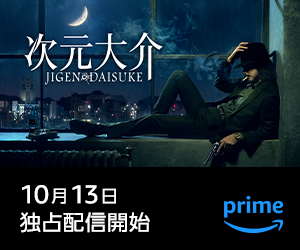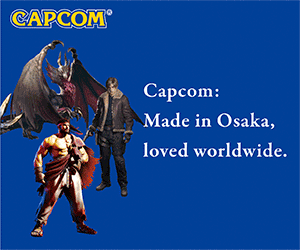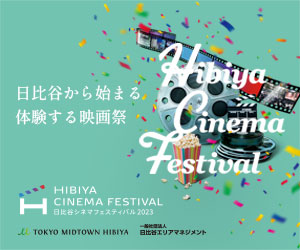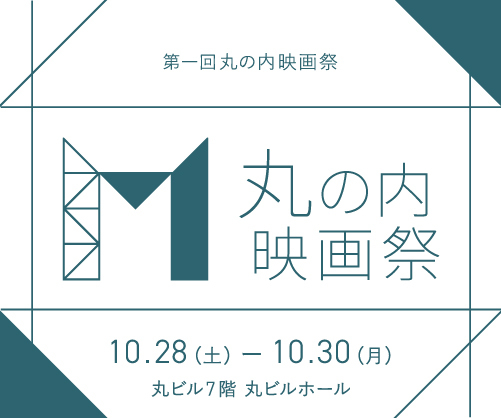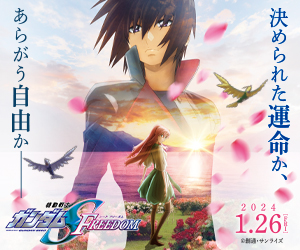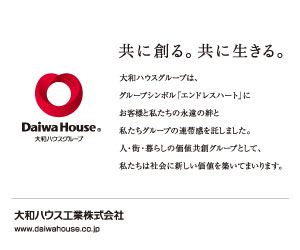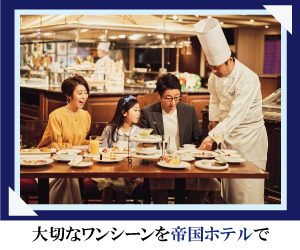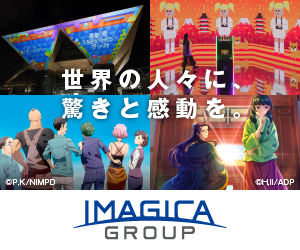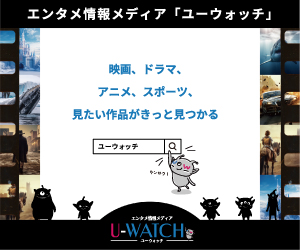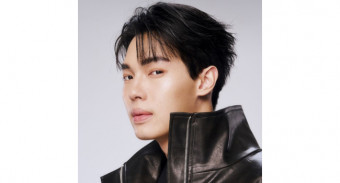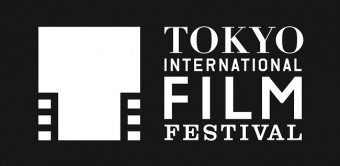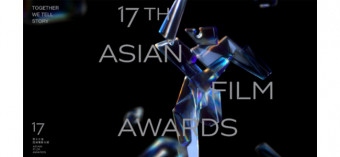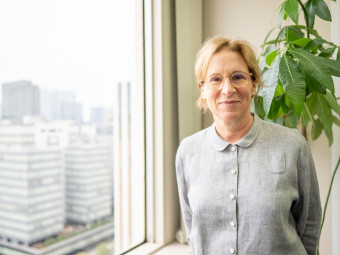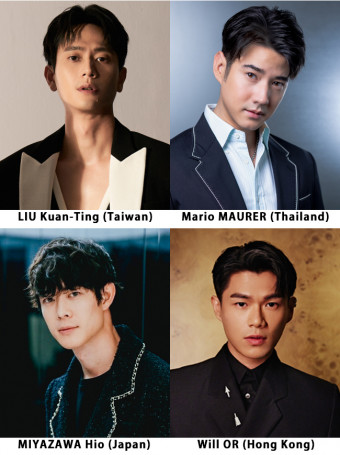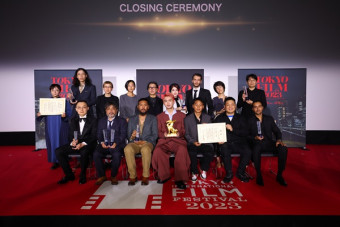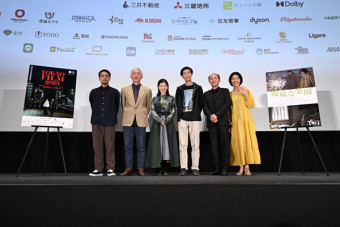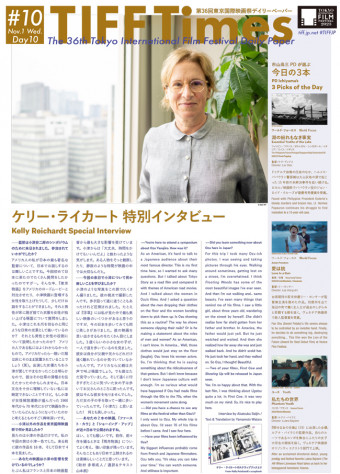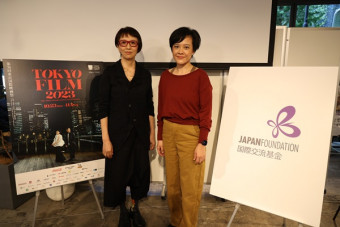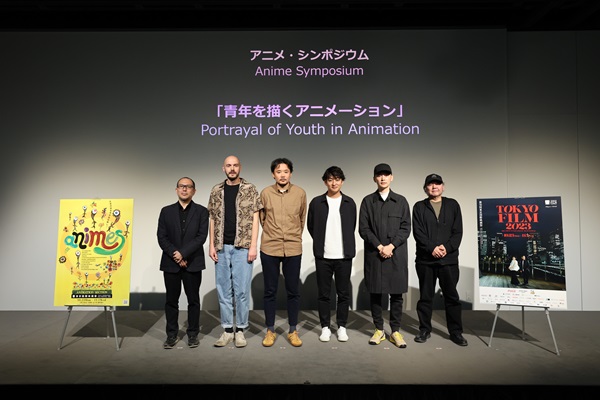
Many of the biggest animation hits tend to feature protagonists who are students, delinquents or other young adults. Several up-and-coming anime filmmakers discussed this fact and the various youthful characters in their films at a symposium on The Portrayal of Youth in Animation, held on October 27 during the 36th Tokyo International Film Festival.
Directors Tachikawa Yuzuru (Blue Giant, Mob Psycho 100), Iwaisawa Kenji (On-Gaku: Our Sound), Yoshihara Masayuki (Komada – A Whisky Family, The Eccentric Family) Filip Pošivač (Tony, Shelly and the Magic Light), and producer Yang Cheng (Art College 1994, Have a Nice Day) joined TIFF Animation Programming Advisor Fujitsu Ryota on stage for a wide-ranging conversation.
When asked why their films, many of which are screening at the festival, feature young adult protagonists, each had very different answers.
Yang, whose Art College 1994 is set on the campus of the China Southern Academy of Arts in the early 1990s, said that stories featuring young adults are where exciting “clashes” occur between a variety of forces in society.
He explained that most animation in China was made mainly for children and revolved around fairy or folk tales, but with the success of Monkey King: Hero is Back in 2015, as well as the popularity of Shinkai Makoto’s films in China, an environment has been created for more anime featuring adults and based on real life.
Yoshihara’s Komada – A Whisky Family revolves around a young woman who becomes the president of her family’s distillery, and attempts to revive a dormant whisky brand. The director said that in the whisky industry, the minimum a product needs to be aged is three years, while most high-quality products take 10 years or more.
After working at P.A. Works animation studio for 20 years, he also saw the film as an opportunity to communicate his ideas about work. “I wanted to show young people that any meaningful work in life takes that much time,” explained Yoshihara. “You need that much passion and enthusiasm to make it a career.”
Tachikawa’s Blue Giant, one of the year’s biggest anime hits, was adapted from Ishizuka Shinichi’s manga about three young men who form a jazz band. Each of the members have different personalities and motivations for joining, which Tachikawa likened to the improvisatory nature of jazz itself.
“Unlike rock bands, jazz bands replace members all the time,” said the director. “I liked how the film starts with them as individuals who come together for a short while, but then go their separate ways.”
Iwaisawa directed On-Gaku: Our Sound, a unique kind of musical film about three guys who pick up instruments, play them for the first time, and think they’re cool. It quickly found a cult following for its slacker ethic, and Iwaisawa explained that he’d wanted to work against clichés, avoiding any overt drama or conflict.
“What I had in mind was a film without any struggle,” he said. “There are so many films about struggle. Here, there’s no struggle and the characters just move on.”
Pošivač’s stop-motion animation Tony, Shelly and the Magic Light revolves around the friendship that develops between the headstrong Shelly and Tony, an 11-year-old boy who glows in the dark. The Czech director and illustrator said he was attracted to his characters’ pre-adolescent status: “It’s a very special time in life, so I was careful with depicting their emotions and tried to remember my personal experience from this time.”
Pošivač also said that while most animation in his country used to feature children as heroes, a new generation of creators and young producers were now creating animated shorts with more complex topics that resonate with the international festival scene.
One common thread among many of the films is that the young male adults do not enter into romantic relationships with the female characters around them. Asked why, Iwaisawa said, “There are enough works like that,” while Tachikawa argued that he doesn’t want to “half-ass” romantic relationships in a film about three males and their struggles.
Yoshiwara’s answer applied directly to his own philosophy of meaning and work: “A very profound romantic relationship can trigger a change in a character. But perhaps because my film is about the value of hard work, I wanted the protagonist to change not from romance, but from work-related relationships that lead him to the success he envisioned.”
When asked what animation can and cannot convey about young subjects, each of the filmmakers gave thoughtful replies.
Pošivač said, “We should talk about very fragile and sometimes not so comfortable things with teenagers and kids.” Iwaisawa agreed, saying, “We need to tell the truth.”
Tachikawa cautioned that filmmakers—including himself—must be careful not to project their current thinking onto naïve protagonists. Yoshihara agreed, saying that trying to directly target a specific age demographic would not likely resonate with contemporary audiences.
On the other hand, Yang believes in the “infinite potential” of animation: “I think there’s nothing you can’t depict,” he said.
While the focus of the symposium was on the depiction of youthful and young adult characters, all the filmmakers agreed that animation is not a medium only for children.
“Animation is capable of a range of themes,” said Pošivač. Though he’s sometimes told that his films are inappropriate for children, the director argues, “It’s about education for the public.”
Iwaisawa explained that while he never watched Studio Ghibli films as a child, he saw and enjoyed them as an adult. “So, while we might make animation for kids,” he said, “adults can find them interesting.”
Tachikawa said he thought any person of any age could watch animation. Animation in Japan, in particular, has many genres and sub-genres, and he hoped for “this kind of freedom of expression and continued diversity within animation.”
Yoshihara believes that filmmakers are still struggling against the social expectation that animation is for children and that the industry still needs to work to get audiences thinking in a different direction.
Yang, the eternal optimist, said he still watches “kid shows” like Doraemon and the films of Miyazaki Hayao. While not all animation is made for kids, he believes adults can become younger by watching it.
“So,” he concluded, “please continue to enjoy animation and remember the spirit of a child in life.”
Anime Symposium: Portrayal of Youth in Animation
Guests: Filip Pošivač (Director), Iwaisawa Kenji (Director), Tachikawa Yuzuru (Director), Yang Cheng (Producer), Yoshihara Masayuki (Director)
Moderator: Fujitsu Ryota (Tokyo International Film Festival programming Advisor / Animation Critic)












